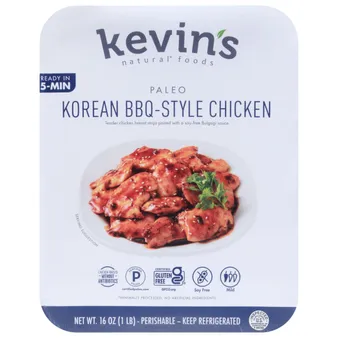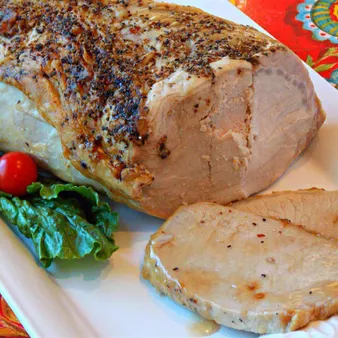Table of Contents
baking soda pork tenderizer – it might sound unusual, but this pantry staple can transform your pork dishes from tough to tender. tauhuichiban is here to guide you through the ins and outs of this culinary technique. We'll explore how baking soda works its magic on pork, delve into different methods for optimal results, and provide tips to ensure your pork turns out tender and flavorful every single time. Get ready to impress your taste buds with this simple yet effective cooking hack!
Aspect | Details |
|---|---|
Mechanism | Baking soda raises the meat's pH, breaking down proteins and tenderizing it. |
Methods |
|
Suitable Cuts | Works best on tougher cuts like pork shoulder, loin, and chops. Can also be used on tender cuts for added tenderness. |
Quantity | Generally, use 1 teaspoon of baking soda per pound of meat. Adjust based on the cut and method. |
Rinsing | Crucial to rinse thoroughly after tenderizing to remove any residual baking soda taste. |
Cooking Time | Tenderized meat cooks faster, so adjust cooking times accordingly to avoid overcooking. |

Unlock Tender Pork With Baking Soda: A Simple, Sodium-friendly Solution
Baking Soda Pork Tenderizer: The Science Behind the Magic
The pH Potion: How Baking Soda Works Its Tenderizing Magic
Imagine baking soda as a tiny superhero that can change the way your pork feels in your mouth. When you sprinkle this white powder on pork, it starts a little science experiment right on the meat's surface. Baking soda is alkaline, which means it makes things less acidic. By raising the pH of the pork, it helps to break down those tough protein bonds that make meat chewy. Think of it like loosening up a tight knot – once it's loose, it's much easier to untangle! This process happens without cooking the meat, so you get super tender pork without overdoing it in the oven or on the grill.
Timing is Everything: How Long to Let Baking Soda Work
Now, here's where we talk about patience being a virtue – but don't worry, it won't take all day! After you coat your pork with baking soda (just like dusting cookies with powdered sugar), you need to let it sit for a bit. For smaller pieces, 15 minutes might do the trick, while bigger cuts could need up to an hour or even overnight in the fridge. It's like letting dough rest before baking; everything just works better when given some time to relax and transform. Remember, though, too much of a good thing isn't always better – if you leave baking soda on too long, your pork might turn into mushy disappointment instead of tender delight!
- Small Cuts: 15-30 minutes
- Large Cuts: Up to an hour or overnight

Baking Soda Pork Tenderizer: The Science Behind the Magic
Baking Soda Pork Tenderizer: Methods and Techniques
Now that we've covered the science behind baking soda tenderizer, let's dive into the fun part – the methods! You've got two main options: velveting and dry brining. Velveting involves soaking small pieces of pork in a baking soda solution for 15-30 minutes, resulting in a silky, tender texture. Dry brining, on the other hand, involves rubbing baking soda onto larger cuts of meat and refrigerating for several hours or overnight.
Think of it like a spa day for your pork – you're giving it a little TLC to make it feel relaxed and tender. And the best part? It's ridiculously easy to do. Just remember to rinse that baking soda off before cooking to avoid any weird flavors.
Method | Description | Time |
|---|---|---|
Velveting | Soaking small pieces in a baking soda solution | 15-30 minutes |
Dry Brining | Rubbing baking soda onto larger cuts and refrigerating | Several hours or overnight |

Baking Soda Pork Tenderizer: Methods and Techniques
Tips and Tricks for Using Baking Soda Pork Tenderizer
Now that you're excited to try baking soda pork tenderizer, here are some handy tips to get you started! First, remember to always rinse that baking soda off before cooking – you don't want any weird flavors messing up your dish. Also, don't overdo it on the baking soda; too much can make your pork mushy instead of tender.
Another trick is to mix baking soda with other tenderizing ingredients like soy sauce or cornstarch for an extra boost of flavor and tenderness. And if you're using the dry brining method, make sure to pat the meat dry with paper towels before cooking to get that nice crust.
- Always rinse baking soda off before cooking
- Don't overuse baking soda – it can make pork mushy
- Mix baking soda with other tenderizing ingredients for added flavor
- Pat dry meat with paper towels before cooking for a nice crust
Lastly, experiment with different cuts of meat and cooking methods to find your favorite way of using baking soda pork tenderizer. And don't be discouraged if it doesn't turn out perfectly the first time – practice makes perfect, right?
Cut of Meat | Recommended Cooking Method |
|---|---|
Pork Chops | Grilling or Pan-Frying |
Pork Shoulder | Braising or Slow Cooking |

Tips and Tricks for Using Baking Soda Pork Tenderizer
Final Thought
Baking soda pork tenderizer is a game-changer for home cooks. By understanding the science behind it and mastering the techniques, you can achieve restaurant-quality tenderness in your own kitchen. Remember to use it judiciously, rinse thoroughly, and adjust cooking times as needed. With a little practice and the help of baking soda, you'll be serving up succulent, flavorful pork dishes that will have everyone asking for seconds.